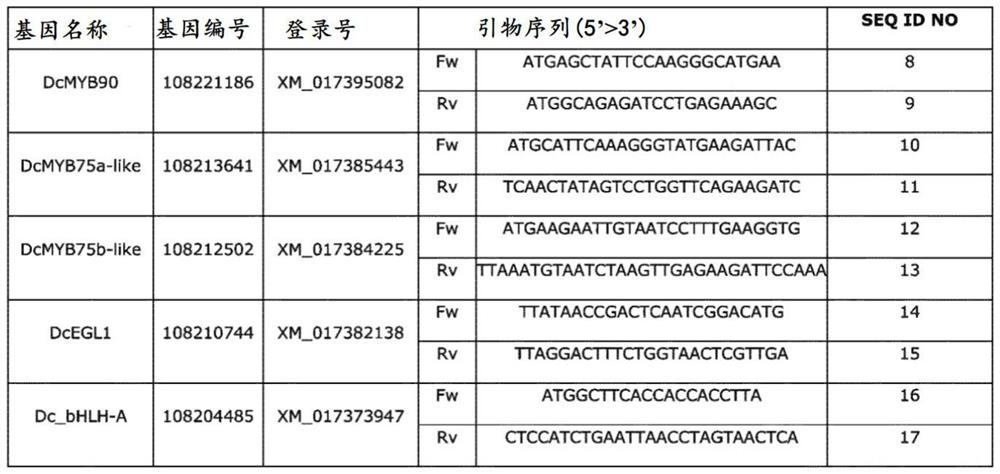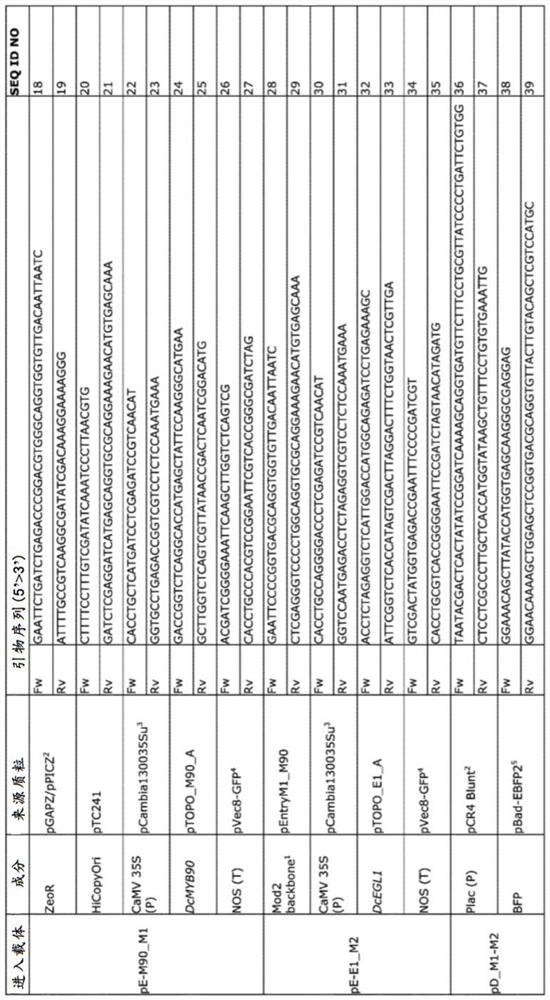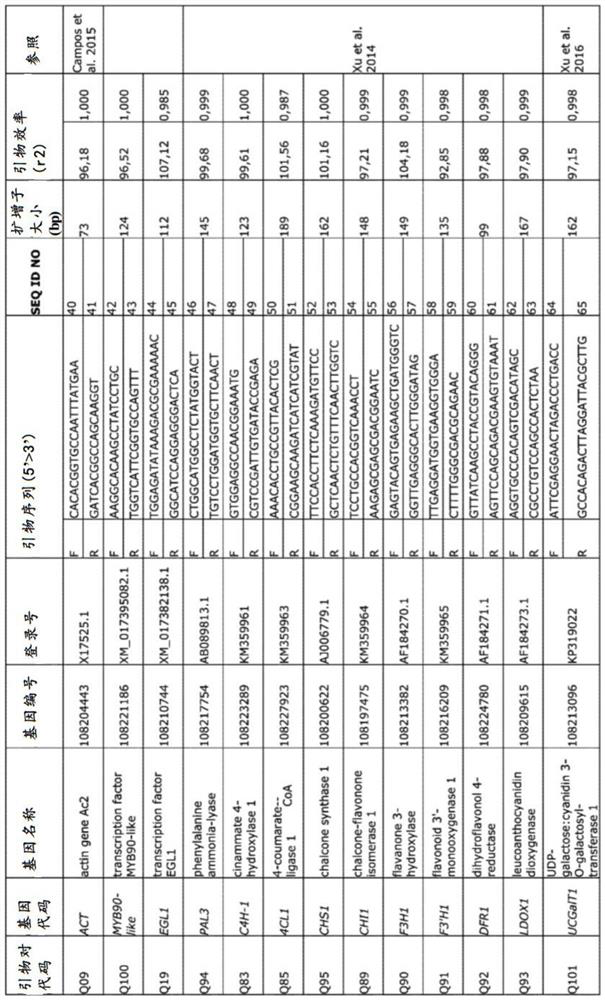Anthocyanin biosynthesis in carrot plants
A carrot and plant technology, applied in angiosperms/flowering plants, microorganisms, plant peptides, etc., can solve problems such as unclear regulatory genes
- Summary
- Abstract
- Description
- Claims
- Application Information
AI Technical Summary
Problems solved by technology
Method used
Image
Examples
Embodiment 1
[0114] Cloning of coding sequences of DcMYB90 and DcEGL1 and construction of transformation vectors
[0115] The open reading frames (ORFs) of DcMYB90 (MYB 90-like; NCBI Gene ID: LOC108221186) and DcEGL1 (EGL1; NCBI Gene ID: LOC108210744) were deciphered from the corresponding Arabidopsis spp. Identification of homologous genes. use figure 1 The primers listed, by using High-Fidelity DNA polymerase (NEB, U.K.) was used to perform PCR to amplify the coding sequence from the cDNA synthesized from the purple tissue inside and outside the main root of "Night Bird". Purify the PCR fragment from the gel and clone into pCR following the manufacturer's instructions TM -Blunt vector (ThermoFisher Scientific, CA, USA). Three clones for each gene were sequenced by Sanger sequencing using standard M13 primers. Positive clones were named pTOPO-M90(A-C) and pTOPO-E1(A-C).
[0116] Under the CaMV 35S promoter, the Agrobacterium transformation vector containing the DcMYB90 and DcEGL...
Embodiment 2
[0118] Simultaneous expression of DcMYB90 and DcEGL1 causes purple pigmentation in orange carrots
[0119] The orange carrot cultivar "Danvers 126" (Daucus carotasubs. sativus; 2n=2x=18 ). After 6-10 weeks of culture on selective medium, pink / purple spots started to appear on the transformed calli. Colored calli were selected and transferred to fresh plates every 4 weeks. After 2-3 rounds of transplanting culture, part of the callus has completely turned purple. The purple callus was transferred to regeneration medium for embryo and shoot development. The regenerated plants were acclimated and transferred to the greenhouse where they were grown in 2L pots with peat. Taproots were harvested 3 months after transfer to the greenhouse, referred to as 3-month-old taproots. Taproots of 6 individual transgenic plants were harvested showing variable pigmentation from almost completely purple to almost completely orange. Individual plants with two almost completely purple taproot...
Embodiment 3
[0123] Transgenic T expressing DcMYB90 and DcEGL1 0 Identification and Identification of Anthocyanins in Plant Taproots
[0124] Sample Preparation
[0125] About 40 g of 3-month-old single taproots were coarsely ground (the rest were stored in a -80°C freezer for RNA extraction); then in 3% H2 SO 4 in (1 / 1, w / w) Homogenize in a two-speed commercial mixer (VWR-Bie & Berntsen, Herlev, Denmark). The homogenate was then mixed with 70% ethanol (1 / 2, w / w), vortexed, and incubated for 1 hour at room temperature. The extracts were spun at 4500 rpm for 20 min and the supernatant was used for further analysis.
[0126] Determination of the total content of monomeric anthocyanins
[0127] Total monomeric anthocyanins (TMA) in taproot samples were determined by a slightly modified pH differential method. The supernatant was diluted (1:20) with 0.2M KCL-HCL (pH 1 ) solution, and the absorbance was recorded between 350 and 700 nm using a UV-Vis spectrophotometer (Thermo Scientific E...
PUM
 Login to View More
Login to View More Abstract
Description
Claims
Application Information
 Login to View More
Login to View More - R&D
- Intellectual Property
- Life Sciences
- Materials
- Tech Scout
- Unparalleled Data Quality
- Higher Quality Content
- 60% Fewer Hallucinations
Browse by: Latest US Patents, China's latest patents, Technical Efficacy Thesaurus, Application Domain, Technology Topic, Popular Technical Reports.
© 2025 PatSnap. All rights reserved.Legal|Privacy policy|Modern Slavery Act Transparency Statement|Sitemap|About US| Contact US: help@patsnap.com



